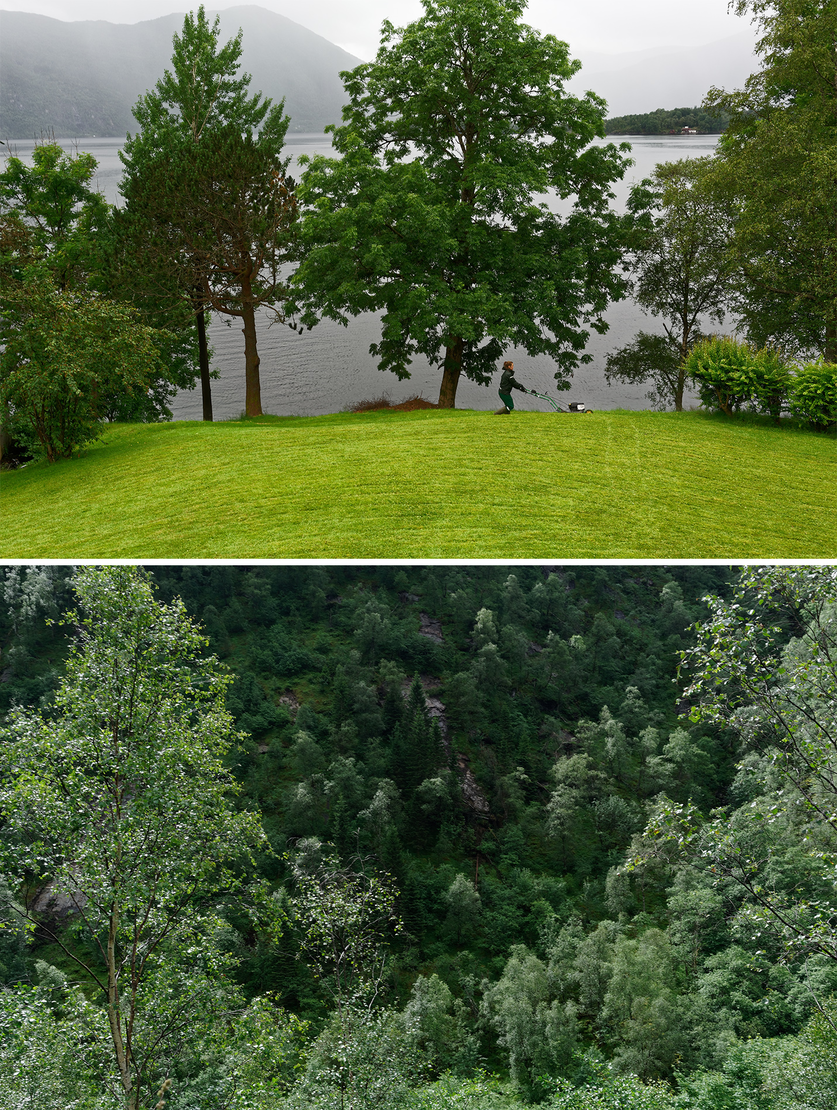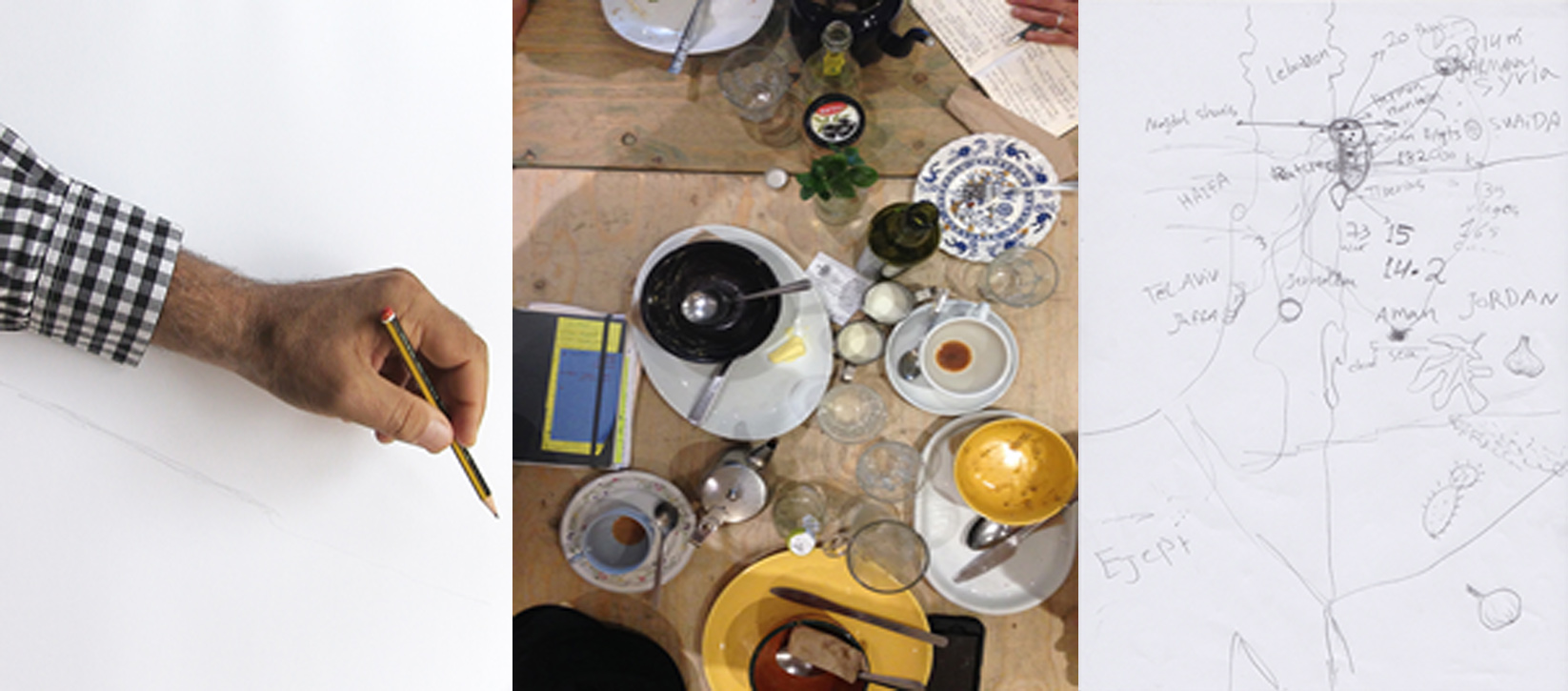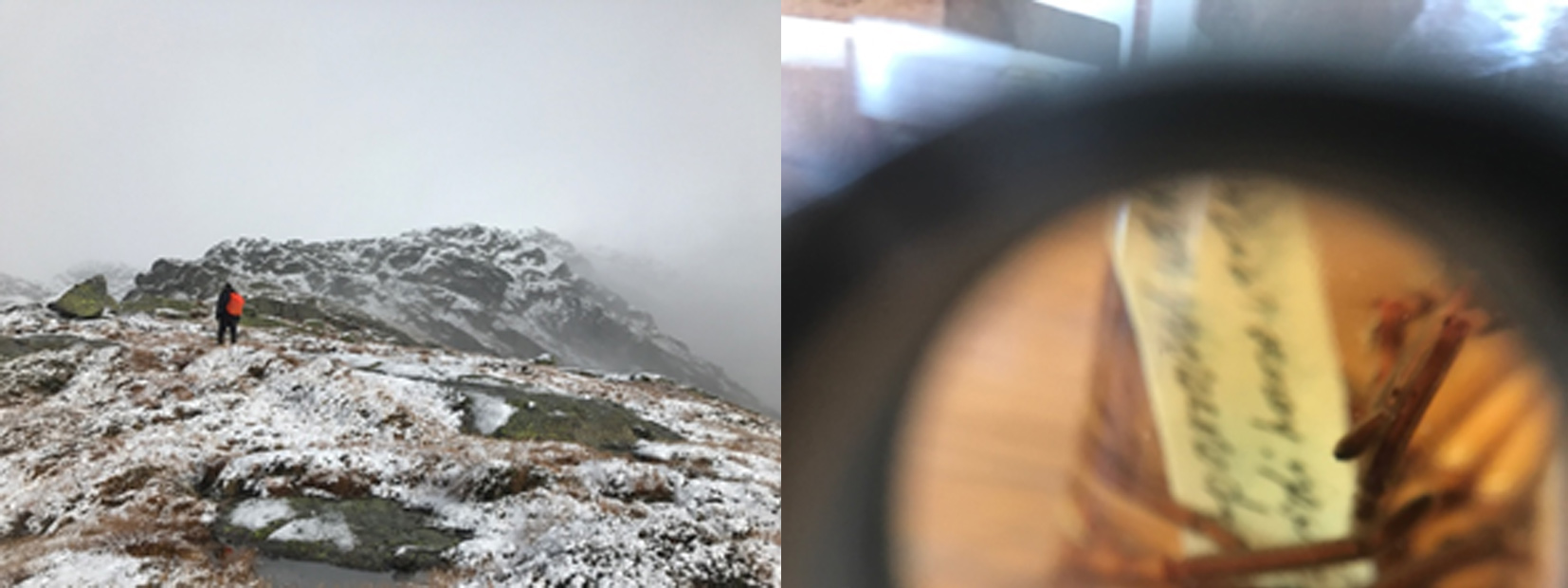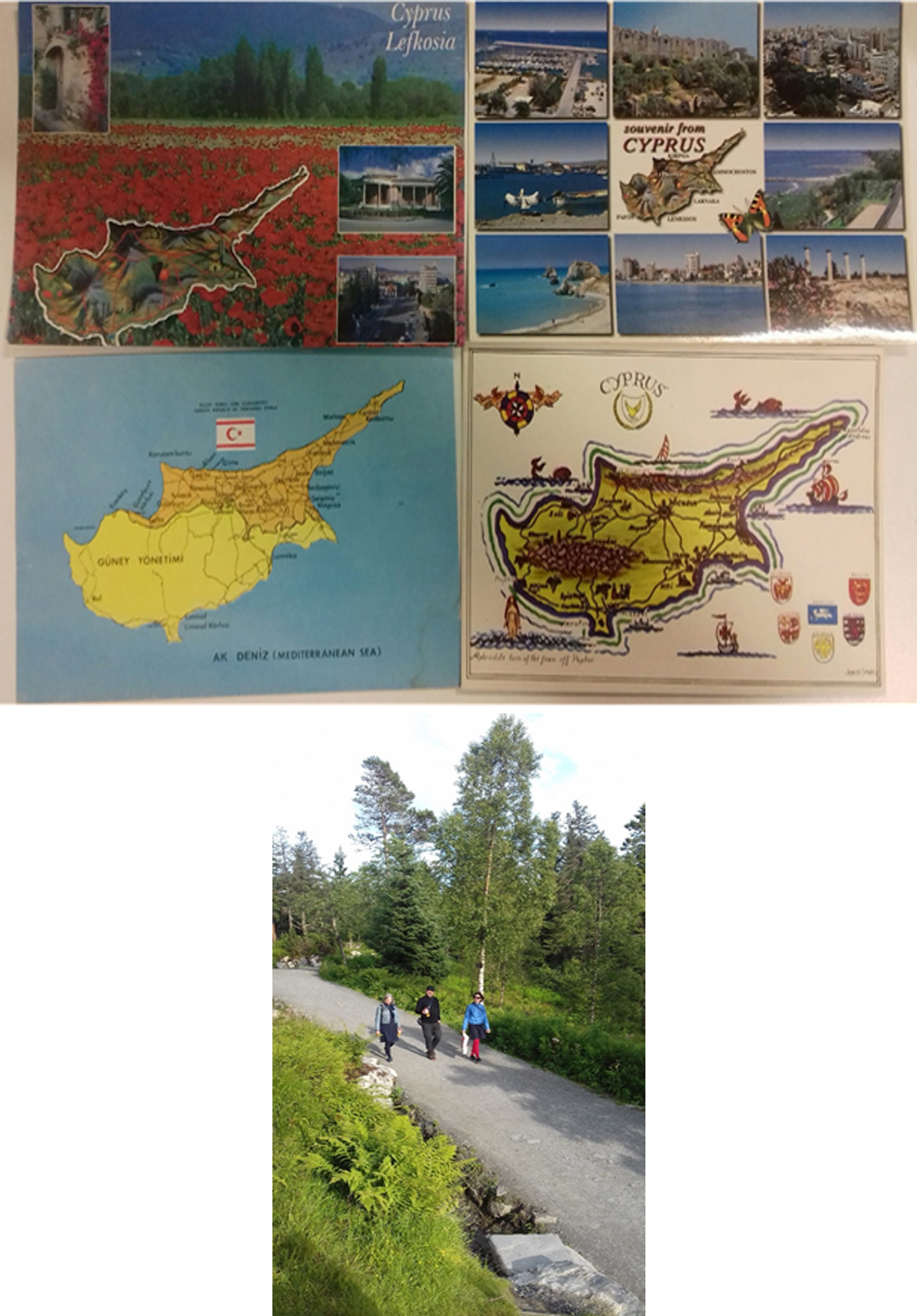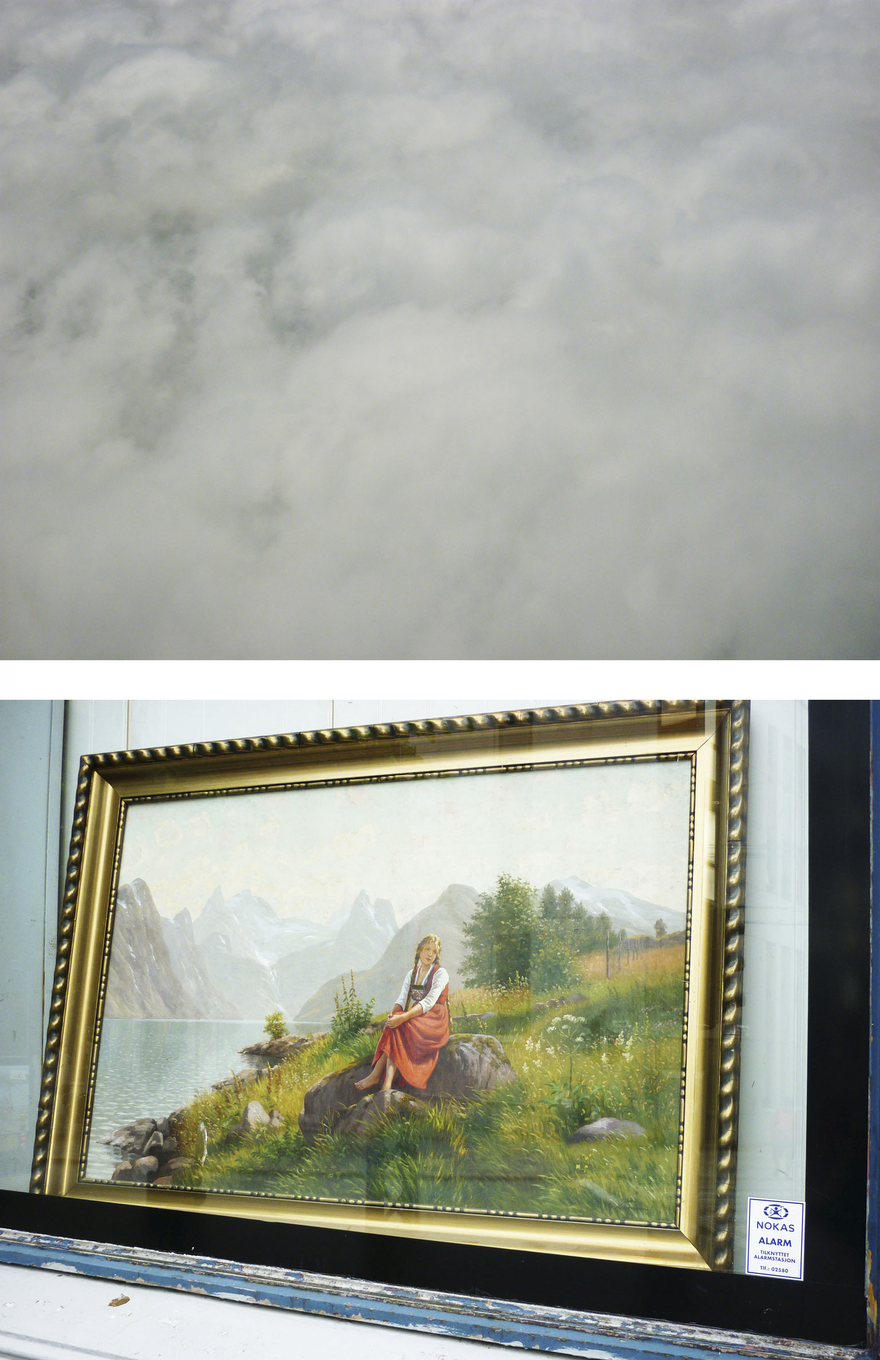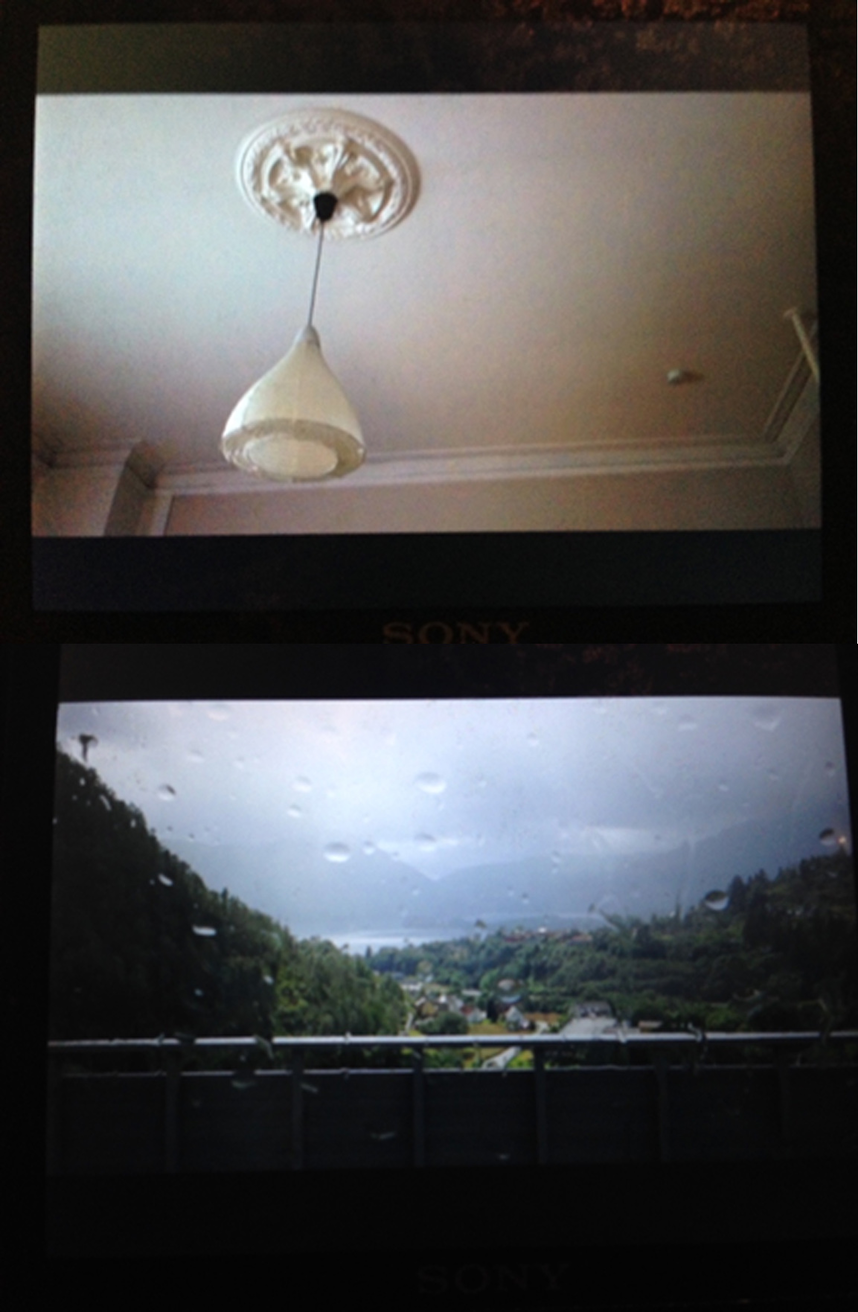Much like Henry David Thoreau, shrouded by moist vapours and mist as he climbed through the forests and up the treacherous wilderness slopes of Mount Ktaadn in 1846,[1] we too journeyed through cloud. But where he was subject to and in contact with the very elements that were actingupon him-the rocks, tree roots, wild animals, and most of all, the rain, storm clouds and violentwinds- we sat in a buffered zone of air-conditioning and cabin service. Thoreau’s descriptions ofexistential threat and his loss of perspective, his disorientation (both topographic and personal) as the mists enfolded him in a world of drifting greys, however remote, strangely offered a parallelnarrative to our own condition. Here among the clouds, with no real sense of an up or a down, letalone a point of orientation with the ground, there was a thusness of things in absentia, of anunknowable and unsayable reality through which we were passing out there in and beyond the clouds. Yet here, Thoreau’s words were layered by our imagination onto the soft enveloping world of grey drifting clouds above an invisible North Sea, somewhere between Edinburgh and Stockholm en route for Bergen. As we look downwards two members of the cabin crew servedsnacks: water and salted Californian almonds, imported from the Carmel area.
On our fourth evening in Bergen, things again felt strangely remote and disorienting. Part of a group of eight people- temporary residents (nomads of a sort) in a city flat discoursing on art and place- our days had been spent navigating a series of meandering thoughts (like Thoreau’sstruggle up the mountain) that might shape our future nomadic dialogues, here and in Nicosia. Once outside the flat, the art of being in contact with place seemed to be more illusive. As wewalked along a heavily wooded mountain ridge that overlooks the city and port of Bergen therewas a sense of detachment from the world.
It started from the moment we entered the sealed carriage of the funicular railway, and grew as we climbed 300 metres backwards up the mountain to Floyen- past the houses in the neighbourhood and above the tree tops- and as we climbed our perspective shifted from the rails,to the city, the sea, the mountain ranges, the whole panorama of islands surrounding Bergen, andthe expanse of sky above. The air was clear and the evening was beautiful, but somehow on ourarrival at the top the concrete viewing terrace accentuated the sense of detachment.
I've visited Bergen twice, but it's a place that has always been mixed up with other places and other stories of places. I've never been quite able to separate it out and think about it in its own terms. When I think about Bergen I also think about Majdal Shams and Famagusta.
During a CCFT Colloquium on Tue.11th July 2018,in a bedroom,in a shared flat used by visiting staff at The University of Bergen, I talked about a drawing Fahed El Halaby, a painter from the Syrian Golan Heights, made for me during a workshop in La Corbiere, Switzerland in 2007. Fahed comes from Majdal Shams in the southern foothills of Mt. Hermon, the largest of Golan's four Arabic Druze towns. Since the June 1967 Six-Day War, Majdal Shams has been under Israeli control. It's a drawing made with a HB pencil on A4 paper showing where Majdal Shams lies in relation to Syria, Israel, Palestine, Egypt, Jordan and Lebanon. Tel Aviv, Jaffa, Haifa, the Dead Sea, Aman and Jerusalem are all noted but the focus of the drawing centres around Majdal Shams. Where the majority of the image is free and open, the weight, tone, intensity and concentration of the line changes at the point where the Golan Heights are represented. In this area the line is darker from having been drawn over and over again. If you look closely you can see how it digs deep into the paper making an indentation that is clear, exact and precise. It's a drawing made by someone who knows the place deeply.
On my first visit to Nicosia, Cyprus in November 2016, architect and fellow CCFT colleague, Yiorgos Hadjichristou told me a story of his family's exile from his mother's village Engomi,in the north of Cyprus, on 15th August 1974 and their subsequent move to Famagusta. This relocation was a consequence of the Cypriot coup d'etat and Turkish military invasion that followed. During my second visit to Bergen, on the 13th July 2018, I recorded Yiorgios make a drawing of Famagusta, again with a yellow and black Staedtler HB pencil on A3 cartridge paper. The most noticeable thing about the making of this drawing, and in looking back over the video of its making, is the amount of time Yiorgios's hand hovers over the page compared to the time the pencil actually touches the page. One inch from the surface of the paper,the pencil rolls in the hand; back and forward,round and round. His hand rests,glides,rises,falls, hesitates, tests, calculates and choreographs where the next line will fall. It's a delicate, careful, detailed, lightly drawn map of a divided city, where most of the time taken to make it was spent getting a feel for the edges of the page, and for the edges of the story.
We were surrounded by tourists; in fact became tourists too. A Babel of languages floated through the air as together we viewed the vista; collectively lured into thinking we could perceive the city as anorganised whole.
Turning our backs on the view, we walked through the dense trees that covered every part of the mountain. We were lost along a kind of Heideggerian holzweg, but something didn’t feel right. Nature was everywhere but the forest paths had been manicured. What we believed to be the natural landscape, it transpired, was a fabrication: a false wilderness to be enveloped in, planted in the C19th to make manifest a National Romantic vision. We weren’t lost in the forest after all: we were lost in our selves and in an artifice.
1.In the local Indian language Thoreau noted, Ktaadn, the second highest mountain in the region, meant the ‘highest land 5. Thoreau, Henry David, The Maine Woods, p.184
Periodically I am thinking of the textI am going to write. 300-500 words.
While the text has been stored onthe Mac Book Pro, much haschanged. I am going in three funerals.I'm waiting for a family member toget a diagnosis.My job ends. I ampreparing for leaving, getting readyfor loss. Place, in the form of ageographic point on earth, means more than before. When everythingis unstable, on wait, unclear, incongruous, fragile; then every stone; allthe solid forms; becomes what createssafety, which brings me peace, which makes me stand steady. I expectJohan to be annoyed thatthe text has stopped, but I have tolet the text rest on my computer,let it mature, and periodically formulate sentences before I get ready. It is becoming increasingly clear tome that without the places I go to orcan go to, it would be difficult to holdon right now. I constantly go back tothe same places, to the few places, I experience that I do not need manyplaces, but I need to experience thesame places over and over again, andI need to know that they are unchanged, when everything else changes. I read other people's reflections onplaces and how places influences us,and I wish that more people shouldget access to the texts, the knowledge;become aware of seven modes ofinsideness and outsideness, and thatit is by scaling down your view thatugly places can become beautiful I find it hard to put words on thevalue of CCFT, Creative Centre forFluid Territories, to verbalize themeaning, to be excact about what wereally do, and I particularly strive to explain why the community bringsme so much; contribute keepingme sharpened.
I can' t think of Bergen, withoutthinking of Scotland, and I can' tthink of Scotland, without thinkingof Cyprus, and then I see the spiders,the containers with formalin (or was it something else?), the crippledinsects, the enthusiastic owner, the textat the windows, the silent performanceand the man with the freshly harvestedoranges.
A real ladies road, binding you, those people just look at that beautiful street, I can count 1,2,3,4
lights and 1,2, 3 further away down the road, great, just great.
Such a beautiful street…………….
Time slips, or slipped melts and someplace over there.... or other, the past future now……………………..not that nostalgic future, the future some place past………………………...now
I hear bells, rhyme, rhythm, and a song in my head.
Also there where constant sounds that you only really hear inside or at least can recognize from the inside.
Her ears heard it and his ears wanted to hear it.
"Perhaps once the glory of every people arises from its pictures", how can you be able to picture this? Here? Right now? To think about making something with an image that is permanent not transitory or ephemeral? I sit and organise pictures, I love images, I even agonise over images, and I try to pay absolute attention to the world....Its serious…….I try not to be cynical however this doesn't preclude being funny……walking and looking are we trying to create through acts of imagination, images that feel inevitable, vivid forms, a new world, a world that is unique, individual and responds to the world, the world I share with you and other people…….know and yet miss-known by still
more people who are confined in their worlds, cultures, histories and societies…is knowledge at its greatest an imperfection, like all knowledge.
Perhaps I feel images that evoke a common humanity even if it is remote from our own. Stimulates imagination, envelopes it, complicates even confuses us, however it improves or develops the capacity for thinking.
Like falling in love, why this one, forgetting the start and end but knowing makes something go where it is not.
Is it possible with this story we can tell many stories, a necessity in it?
… Story within a story within a story within a…
Images, sounds, odours and tastes, textures, light, all of them and many others can and they do craft story telling. The story begins…
The Hand, my and your presence overwrite on it another new story.
The drifting of the breeze, the tapping of the rainwater alter this new story.
This happens incessantly, anytime and everywhere… the stories flow, flow next to each other within one other.
I carried to Bergen my stories: from my city Nicosia- the only divided capital, from my home town Famagusta- the ghost city or the sleepy beauty. I added to this load more stories of the radiating Kiev and the eternally enchanting Kyoto.
My stories met with my co-travellers’ stories. Then they all met with the stories of Bergen and created new stories. Not one. But an abundance of them. The Bergen story inevitably- not due to necessities - gave birth to so many stories: emerging out of the froth of the ocean’s wave, vanishing as expected, and still leaving traces like the footsteps, like carving the stones.
Nature and us, and the new ‘natures’ produced by us keep the eternal construction of narratives: Weaving the stories together and then taking them away with us to different destinations and letting them grow and give birth to new ones
Time, different modes of speed facilitate the interconnecting mechanism of the stories’ realm. The harnessed and the natural elements, interwoven in such an almost convincing way, they trigger our minds for co-existence.
Somewhere outside Bergen, (and inside Bergen) the manmade sculpted stone accommodates the fluid and hurrying presence of the water. The water again leaves its unnoticeable sculpting traces. I take this view with me and meet with it again back home: the water connects us?
The timber geometrically arranged paving will absorb the human footsteps and start narrate their stories by the left behind traces. I leave my Cypriot footsteps in Bergen- do I?
The treated metal with the stones, the pitched roof with the vegetation, the natural and artificial vessels of the water bodies, the timber dining table mingling food and engraved on its surface flower pots echo the continuation and the stories within a story within a story. People may not be present but we read vividly the stories that were told and will be told. I storage them in my memory…was I present there?
It seems that we have come to a place where language is fading, perversely becoming that which cannot be spoken, should not be remembered. I should quickly make you aware of the ghosts in the trees, they linger like lights attaching themselves to the edges of memories from a place that is just recognisable. I too have travelled here to see what it was that I have forgotten, only to find that I have no memories from this place and all I can recognise are photographs of ghosts that used to live here. Language was once everything, and might still be for a short wail. Although I fear the battle is lost, along with our memories, even the ghosts are growing dimmer. Of all the promises, dreams and hopes that are lost or transcended, this remains that artifice, floating on the peripheral of perception, that I least understand. The one I can least surrender to. Instead of resigning, giving in or just accepting, resistance might be needed against those new masters of narratives who insist on celebrating the end of yearning, striving to extinguish the forces of becoming and enacting the denial of the embodied. To you I say we will find other adequate ways of unfading, but for now I offer you gladly this, observe - here I give you this forest, it should keep you content for that fraction of a moment where you might remember. And. You might consider going there; I think you should.

